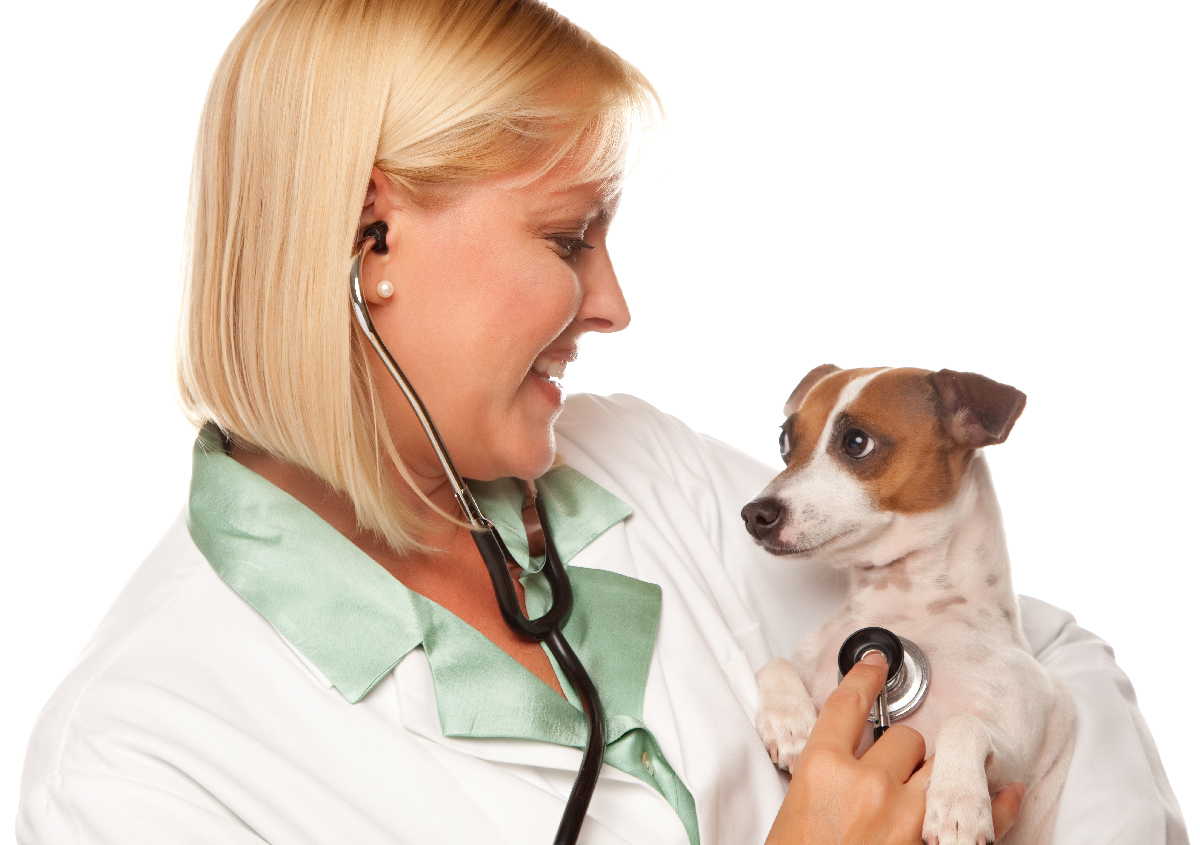What You Need to Understand About Veterinary Providers: A Review of Diagnostic Devices and Procedures
Veterinary solutions play an essential duty in preserving the health and wellness of pet dogs. Regular check-ups can disclose concealed health and wellness worries early on. Various analysis tools and procedures, such as blood tests and imaging strategies, give important understandings right into an animal's health. Comprehending these methods is crucial for family pet proprietors. What specific analysis treatments are most typically utilized, and how can they influence a pet's treatment plan?
Significance of Normal Vet Examinations
While lots of family pet proprietors might take too lightly the importance of regular vet examinations, these consultations are important for maintaining a pet's total health and wellness. Routine sees to the vet allow for early detection of possible health issues prior to they escalate right into serious troubles. Normal examinations commonly consist of inoculations, which are essential for stopping transmittable conditions that might drastically impact a pet's wellness. In addition, these appointments offer an opportunity for veterinarians to assess the animal's weight, oral health and wellness, and general problem, ensuring that the pet dog is growing. During these brows through, pet proprietors can also obtain useful recommendations on diet plan, workout, and preventive treatment tailored to their details pet dog's needs.
Typical Analysis Procedures in Vet Medicine
In vet medication, accurate medical diagnosis is vital for efficient therapy. Common analysis treatments include blood screening techniques, advanced imaging modern technologies, and urinalysis, each playing a significant role in identifying health problems. Recognizing these techniques enhances the capability to offer suitable look after pet individuals.
Blood Evaluating Techniques
Blood testing techniques act as important analysis tools in veterinary medication, enabling veterinarians to assess the health and wellness of animals properly. These techniques include collecting blood examples to evaluate numerous elements, such as red and white blood cells, platelets, and biochemical pens. Typical examinations consist of full blood matters (CBC), which evaluate general wellness and identify infections, and biochemical panels, which evaluate body organ function and metabolic condition. In addition, serological examinations can identify details conditions with antibody detection. Blood testing is minimally invasive and provides essential info that helps in diagnosing conditions, keeping track of health and wellness standing, and examining responses to treatments. Generally, these techniques play an important function in ensuring optimal care for family pets and animals alike.
Imaging Technologies Used
Analysis imaging technologies are necessary devices in veterinary medication, matching blood screening strategies by supplying visual understandings into an animal's internal frameworks. Usual imaging techniques consist of X-rays, which are helpful for evaluating bone fractures and identifying international items, and ultrasound, which permits for real-time visualization of soft cells and body organs. Magnetic vibration imaging (MRI) supplies detailed photos of complicated anatomical locations, especially in neurological assessments. Computed tomography (CT) gives cross-sectional photos, enhancing analysis precision for various problems. Each of these modern technologies aids vets in identifying health problems, preparing treatments, and keeping track of recuperation. By including imaging technologies, vet professionals can much better analyze a pet's health and make informed choices concerning their care.
Urinalysis and Diagnostics
Urinalysis serves as a crucial diagnostic device in veterinary medication, giving important understandings right into a pet's general health and aiding in the detection of different conditions. This non-invasive procedure assesses urine examples to analyze kidney function, hydration status, and metabolic disorders. Usual elements analyzed consist of specific gravity, pH levels, glucose, healthy proteins, and the existence of blood or germs. Unusual findings can suggest concerns such as urinary system tract infections, diabetic issues mellitus, or kidney illness. To boost analysis precision, urinalysis is commonly performed together with other examinations, such as blood job and imaging researches. Early detection via urinalysis can bring about prompt interventions, improving the prognosis for lots of veterinary individuals. As a result, it is a necessary aspect of thorough vet treatment.
Understanding Blood Tests and Research Laboratory Evaluation
Understanding blood tests and lab analysis is vital in veterinary medicine as it aids in detecting various health problems in pets. Various sorts of blood examinations give important information about a pet's inner state, while analyzing laboratory results needs careful factor to consider of many factors. This area will explore the kinds of blood examinations readily available and the value of their results.
Types of Blood Tests
Blood tests play a vital function in vet medication, giving important understandings into an animal's health and wellness status. Various types of blood tests are used, each serving different functions. Total blood counts (CBC) evaluate general health and wellness and find problems such as anemia or infection. Biochemical accounts review body organ feature by gauging enzymes and electrolytes, offering understandings right into metabolic health and Read More Here wellness. Serological examinations determine details antibodies or virus, aiding in the diagnosis of infections or autoimmune diseases. Blood keying warranties safe transfusions, while coagulation examinations determine the blood's capacity to embolisms, vital for surgeries. These tests collectively boost diagnosis, therapy preparation, and tracking of an animal's health, illustrating the importance of comprehensive laboratory evaluation in vet care.

Analyzing Lab Outcomes
A detailed evaluation of laboratory results is crucial for accurate diagnosis and treatment in veterinary medicine. Translating laboratory results needs an understanding of regular referral arrays and the significance of discrepancies. Blood examinations can disclose various health and wellness indications, such as body organ feature, electrolyte balance, and the presence of infections. Veterinarians have to take into consideration the whole medical picture, consisting of the animal's history, physical exam findings, and any type of signs and symptoms provided. Variants in outcomes may emerge from factors such as age, type, and underlying health and wellness problems. Laboratory outcomes should not be checked out in seclusion but instead as part of an all-encompassing diagnostic approach. Exact interpretation permits tailored treatment plans and far better outcomes for vet individuals.
Imaging Techniques: X-rays, Ultrasounds, and Beyond
Imaging techniques are important devices in veterinary medicine, supplying vital understandings into the health and health of animals. Amongst one of the most generally utilized techniques are X-rays and ultrasounds. X-rays are important for visualizing bone frameworks, assisting vets recognize fractures, growths, or foreign objects. This technique is non-invasive and quick, making it ideal for immediate situations.Ultrasounds, on the other hand, use sound waves to develop pictures of soft cells and organs. This technique is specifically useful for analyzing the heart, abdominal area, and reproductive body organs, enabling veterinarians to assess problems like fluid build-up or organ abnormalities.Beyond X-rays and ultrasounds, progressed imaging techniques such as computed tomography (CT) and magnetic vibration imaging (MRI) are significantly utilized in vet practice. These approaches supply thorough cross-sectional images, boosting the accuracy of medical diagnoses and therapy plans. Cancer Veterinary Near Me. Overall, imaging strategies play an important role in ensuring reliable veterinary treatment
The Duty of Biopsies in Diagnosing Pet Dog Wellness Issues
Accuracy in detecting wellness problems in family pets often pivots on using biopsies, which provide definitive info concerning cells irregularities. A biopsy includes the elimination of a little example of tissue for evaluation under a microscopic lense, allowing vets to identify numerous conditions, including infections, tumors, and inflammatory illness. This diagnostic device is important for differentiating in between benign and malignant growths, guiding treatment decisions, and examining the seriousness of a condition.Biopsies can be carried out making use of numerous techniques, such as needle ambition, incisional biopsies, or excisional biopsies, relying on the place and sort of cells involved. The selection of method may affect recovery time and the amount of cells gathered. Ultimately, the information amassed from a biopsy can cause targeted treatments, boosting end results for pets facing significant health and wellness difficulties. Veterinarians highlight the value of this treatment in attaining exact diagnoses and reliable therapy strategies.
Advanced Diagnostic Equipment: Endoscopy and CT Checks

Advanced analysis devices, such as endoscopy and CT scans, play a crucial function in modern veterinary medicine, supplying non-invasive approaches to picture internal frameworks and diagnose various problems in family pets. Endoscopy involves using an adaptable tube geared up with a camera, enabling veterinarians to take a look at the stomach tract and respiratory system directly. This method can reveal abnormalities such as lumps, foreign bodies, or inflammation, allowing targeted treatment plans.CT scans, on the various other hand, make use of advanced imaging modern technology to create detailed cross-sectional photos of the body (Board Certified Veterinary Cardiologist). This approach is specifically valuable for assessing complex frameworks like the mind, back, and joints. By giving high-resolution photos, CT scans assist veterinarians in determining issues that might not be obvious via typical radiography. Together, these innovative devices enhance diagnostic precision, enhance treatment end results, and eventually add to better overall pet dog wellness monitoring

Interpreting Examination Results: What Family Pet Owners Need To Know
Recognizing examination outcomes can be a difficult task for animal proprietors, particularly after advanced treatments like endoscopy and CT scans have been carried out. Interpreting these outcomes requires an understanding of medical terms and a clear understanding of what the searchings official website for show concerning the family pet's health. Veterinarians often provide explanations, but the complexity of the outcomes can still bring about confusion.Pet owners must proactively involve in conversations with their vets, asking inquiries to clarify any uncertainties. It is important to understand uncommon versus normal results and the effects for the animal's therapy plan. Furthermore, acknowledging that some outcomes may require more testing or surveillance can help owners stay notified about their pet dog's wellness journey. Ultimately, a collective strategy between pet dog proprietors and vet experts cultivates much better wellness end results and boosts the total care experience for animals.
Frequently Asked Questions
How Do I Pick the Right Vet Clinic for My Pet dog?
Choosing the appropriate vet center includes investigating check these guys out regional alternatives, evaluating qualifications, visiting facilities, and assessing team communications (Cancer Veterinary Near Me). Prioritizing recommendations from trusted resources can assist ensure the best care and environment for a pet's health and wellness needs
What Should I Do if My Pet Refuses to Go to the Veterinarian?
When a family pet refuses to visit the vet, it's recommended to stay calm, usage deals with or toys to lure them, and take into consideration setting up a home see if stress and anxiety lingers. Persistence and positive support are key.
Exist Telehealth Options for Vet Solutions?
Telehealth options for veterinary solutions are progressively available, allowing family pet owners to talk to veterinarians from another location. These solutions make it possible for discussions concerning wellness concerns, advice on small disorders, and follow-ups without requiring to check out a clinic.
How Usually Should My Pet Dog Have Oral Exams?
The regularity of dental examinations for animals generally depends upon their age and breed. Generally, veterinarians advise annual oral analyses, although some pets may need more frequent check outs to maintain excellent oral wellness.

What Are the Prices Related To Vet Diagnostics?
The costs connected with veterinary diagnostics can differ extensively, generally varying from standard tests like blood job to advanced imaging methods. Aspects affecting expenses consist of the facility's location, equipment made use of, and certain tests required for each and every family pet. Vet solutions play a crucial role in keeping the health and wellness of pet dogs. While lots of animal proprietors might ignore the value of regular veterinary examinations, these visits are important for preserving a pet's general wellness. In addition, these visits give a chance for veterinarians to assess the pet's weight, oral health, and overall condition, making certain that the animal is thriving. Precision in diagnosing health and wellness problems in family pets commonly hinges on the use of biopsies, which give conclusive info regarding cells problems. In addition, identifying that some outcomes might call for further screening or surveillance can help owners remain educated regarding their animal's wellness trip.